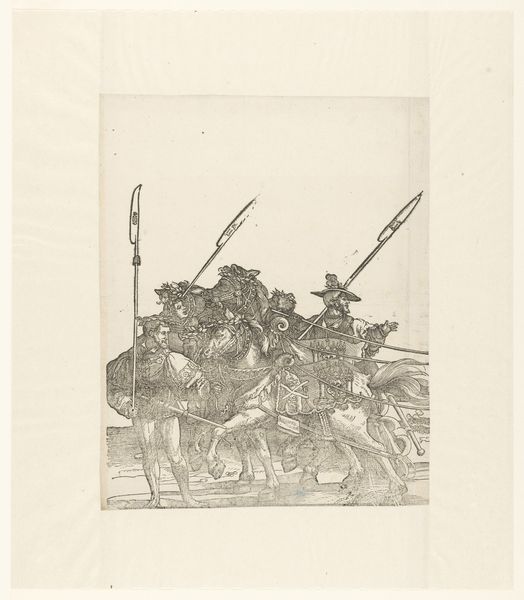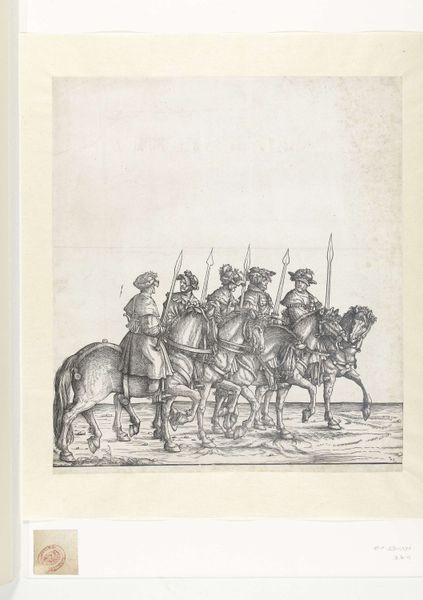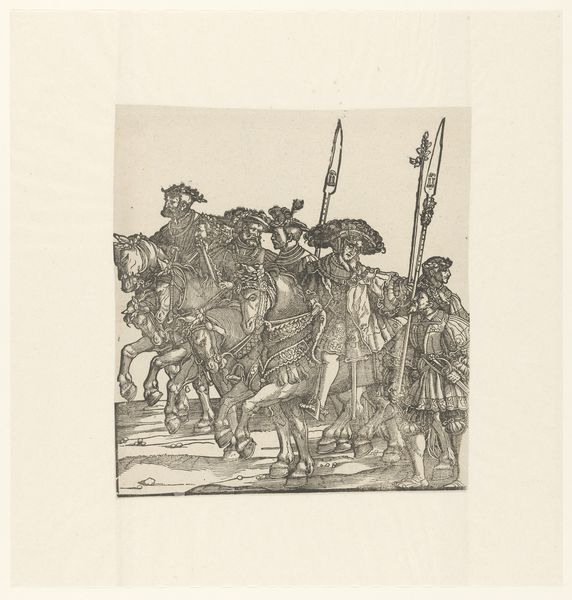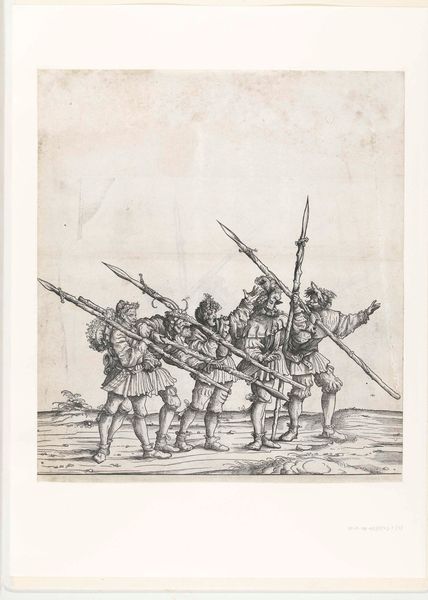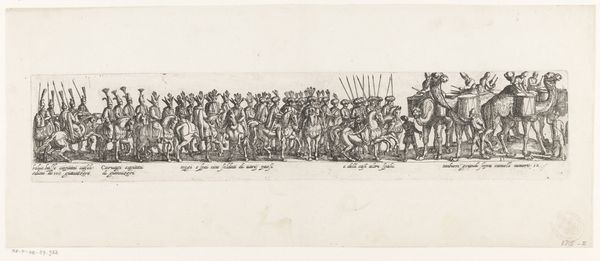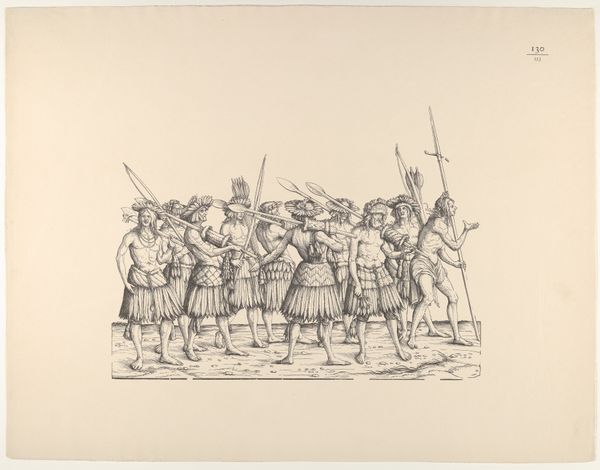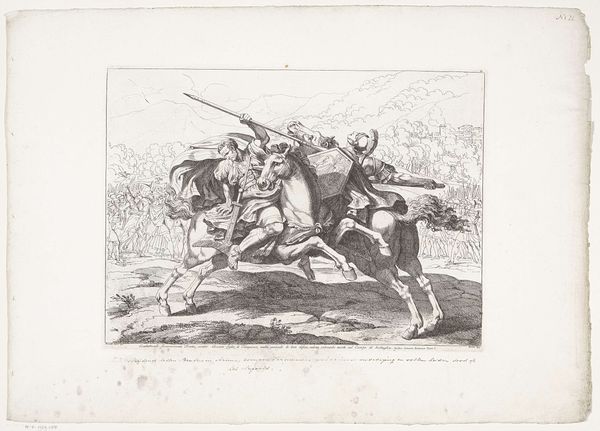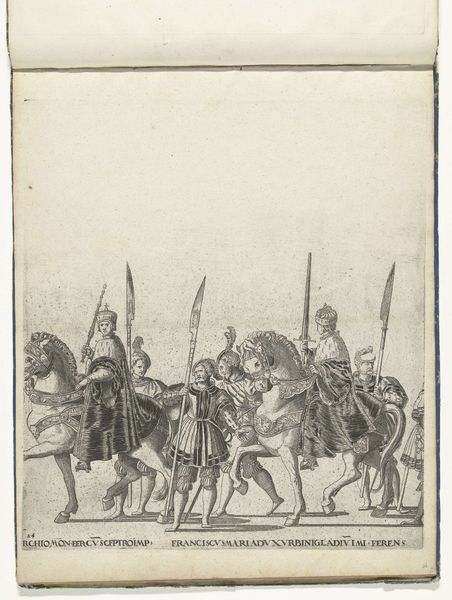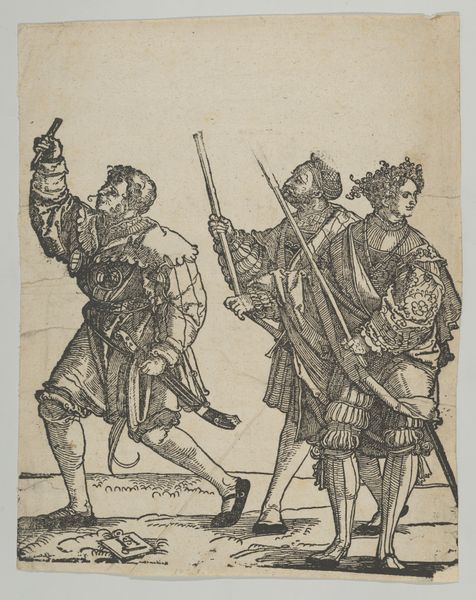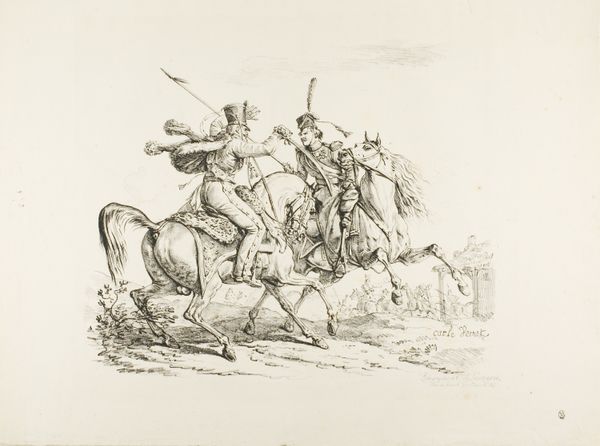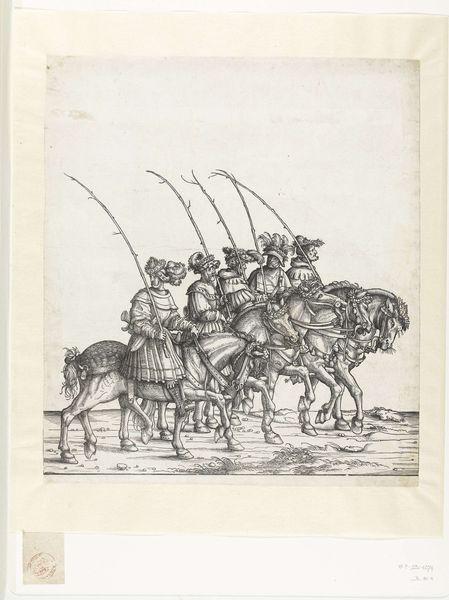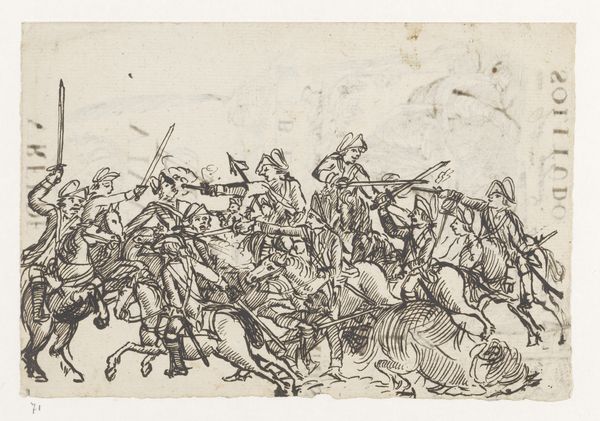
drawing, print, woodcut, engraving
#
portrait
#
drawing
# print
#
figuration
#
woodcut
#
line
#
history-painting
#
northern-renaissance
#
engraving
Dimensions: height 392 mm, width 308 mm
Copyright: Rijks Museum: Open Domain
Curator: Here we have “Ruiters en voetknechten,” or “Horsemen and Foot Soldiers,” a woodcut and engraving crafted in 1537 by the Northern Renaissance artist, Hans Schäufelein. Editor: What immediately strikes me is the intensity of detail, a symphony of textures created by intricate lines. It almost feels sculptural despite being a two-dimensional print. Curator: Indeed, Schäufelein was operating in a period of significant shifts in the representation of power. This work, likely commissioned, showcases a regimented military display. Notice the symbolic adornments, the emblems of power woven into their garments and weaponry. This wasn't just about documenting; it was about projecting authority and order during a time of considerable social upheaval with the Reformation brewing. Editor: The composition itself reinforces that sense of order. The figures are stacked, yet distinct, their gazes carefully arranged. I’m particularly drawn to the tonal range achieved with such a limited palette—the deep blacks offering a dramatic contrast against the stark white of the paper, creating a real dynamism. Curator: The choice of woodcut and engraving is interesting too, offering both accessibility, allowing for reproduction and widespread distribution, and allowing an impressive level of fine detail, which we see clearly in their attire and equipment. This also reflects on a more general trend to spread ideals during the religious reformation in Germany and to spread more personal art to people of different classes. Editor: Look at the almost playful treatment of light! The subtle gradations lend volume and weight to these figures. See, for instance, the texture and implied shape in the rounded caps and hats. I find these small touches to be remarkable. Curator: It speaks volumes about the patronage system of the time, doesn’t it? Commissioned art became a method for political positioning and legacy making. Schäufelein had clearly mastered capturing the nuanced needs of his patrons. Editor: Ultimately, I’m left impressed by Schäufelein's mastery. The line work, the composition... everything feels incredibly deliberate and effective. Curator: And for me, the print serves as a fascinating snapshot of its historical moment, reflecting both artistic skill and political aspirations.
Comments
No comments
Be the first to comment and join the conversation on the ultimate creative platform.
